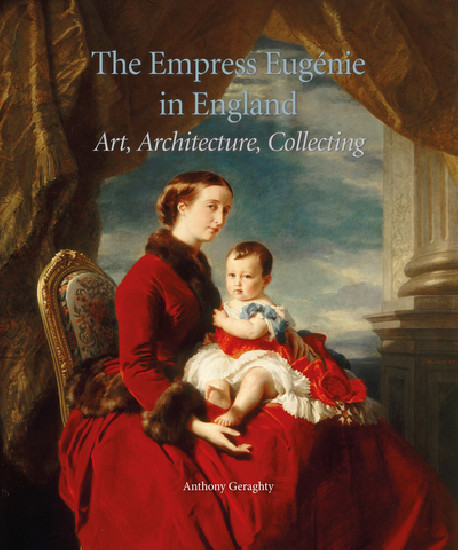No products
Product successfully added to your shopping cart
There are 0 items in your cart. There is 1 item in your cart.
Our webstore uses cookies to offer a better user experience and we consider that you are accepting their use if you keep browsing the website.

Bilingual art books and foreign editions
- New Art Books
- Exhibition catalogue
- Highlights
- Art Book Sale
- Museum's Shop & Gifts
- Bilingual art books and foreign editions
- Children's Books
- Art History
- Painting
- Architecture
- Sculpture
- Drawing & Engraving
- Photography
- Contemporary art
- Decorative Arts & Design
- Art Techniques
- Critics
- Entertainment art books
- Civilisations
- Partners Reviews

The Empress Eugénie in England - Art, Architecture, Collecting
This absorbing book tells the story of Empress Eugénie (1826-1920), the wife of Napoleon III and the last Empress-Consort of France.
| Model | 9781916237827 |
| Artist | Art & History |
| Author | Anthony Geraghty |
| Publisher | Holberton |
| Format | Ouvrage relié |
| Number of pages | 240 |
| Language | English |
| Dimensions | 290 x 240 |
| Published | 2022 |
Today she is remembered for her physical beauty, for her influence as a taste maker and for her glittering contribution to the second imperial court - but she outlived the Second Empire by half a century and lived in exile in England.
The Empress bought the Farnborough Hill estate in 1880, following a decade of personal tragedy: the collapse of the Second Empire (1852–70), the death of Napoleon III, and the loss of her only child. The death of the Prince Imperial in 1879, aged twenty-three, ended all hope of a Bonapartist restoration. With the imperial succession removed to another branch of the family, Eugénie resolved to create a permanent monument to her husband and son.
In this book, Anthony Geraghty analyzes the principal buildings on the imperial estate and provides the first detailed account of the lost interiors of Farnborough Hill. He traces the origins of the collection back to the Second French Empire, and—drawing upon historic photos, inventories, and sale catalogs—he shows how the collection was displayed in the principal rooms of the house. Finally, the book describes the breakup of the estate in 1927, when the house was sold to a convent school and the collection was dispersed at auction. Today, only the Mausoleum functions as Eugénie originally envisaged. Geraghty, however, recovers the totality of Eugenie’s vision for Farnborough. In so doing, he describes how the Napoleonic ideal, for one final time, was made visible through art, architecture, and collecting.
Recently viewed items






